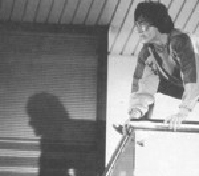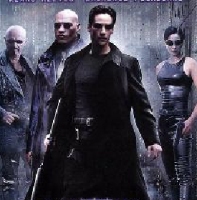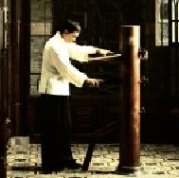by Dr. Craig D. Reid http://www.blackbeltmag.com
The 11 titles listed here aren’t the best martial arts films ever made or even my favorites. Rather, they were chosen for the impact they had on the genre, either by presenting new directions in fight choreography or by bolstering international appeal. Therefore, they’re listed in order of release date, not in order of preference.
Martial Arts Movie #1: Fist of Fury (1972)
 After the Sino-Japanese War (1894-1895), China was a fractured country, its pieces handed out to Japan and various European powers. Japan played a villainous role in Chinese history from that point on. Even after the nation’s defeat during World War II, the fear of economic backlash against the Chinese kept Hong Kong and the Republic of China mum about Japanese atrocities committed against the Chinese.
After the Sino-Japanese War (1894-1895), China was a fractured country, its pieces handed out to Japan and various European powers. Japan played a villainous role in Chinese history from that point on. Even after the nation’s defeat during World War II, the fear of economic backlash against the Chinese kept Hong Kong and the Republic of China mum about Japanese atrocities committed against the Chinese.
Bruce Lee’s Fist of Fury changed all that. His character defiantly defeated Japanese martial artists in 1909 Shanghai, when the city was under strict Japanese rule. Lee single-handedly crashed through that barrier of silence, giving the Chinese a sense of identity and pride. Although Story of Huang Feihong, Part 1 (1949) ushered in the second genre of Chinese movies known as gong fu pian (“kung fu film,” in which heroes fought with realistic skills), Fist legitimized it and brought international prominence to Hong Kong’s waning film industry.When he was older, he earned a scholarship to study at a sports university. Then he came back and studied with Panna Rittikrai, who helped him get his first work in the movies.
Martial Arts Movie #2: The 36th Chamber of Shaoli(1978)
 In response to the popularity of the kung fu movies Jackie Chan made at Golden Harvest, rival studio Shaw Brothers countered by having filmmakers Chang Cheh and Liu Chia-liang create a new genre called guo shu pian. Although translated as “national art film,” which implies that the national art is martial arts, guo shu films were designated as neo-hero movies because they focused on a new style of protagonist. Directed by Liu and starring his adopted brother Gordon Liu Chia-hui as real-life hero Monk San De (one of the legendary “10 Tigers of Shaolin”), The 36th Chamber of Shaolin signaled the start of the guo shu film. It’s also important because it was the first movie to unveil the secret training methods of the ancient Buddhist monastery.
In response to the popularity of the kung fu movies Jackie Chan made at Golden Harvest, rival studio Shaw Brothers countered by having filmmakers Chang Cheh and Liu Chia-liang create a new genre called guo shu pian. Although translated as “national art film,” which implies that the national art is martial arts, guo shu films were designated as neo-hero movies because they focused on a new style of protagonist. Directed by Liu and starring his adopted brother Gordon Liu Chia-hui as real-life hero Monk San De (one of the legendary “10 Tigers of Shaolin”), The 36th Chamber of Shaolin signaled the start of the guo shu film. It’s also important because it was the first movie to unveil the secret training methods of the ancient Buddhist monastery.
Martial Arts Movie #3: The Shaolin Temple (1982)
 The importance of this movie parallels the importance of its star. Jet Li was born during a time when intellectuals and philosophers were persecuted, when the government outlawed martial arts and even destroyed temples and executed monks who refused to enter re-education camps. Li broke down those walls and became Communist China’s first actor to conquer Hollywood. He accomplished that feat by excelling in the cultural contraband of martial arts, philosophy and cinema The Shaolin Temple was China’s first live-action kung fu movie since the 1949 Communist takeover. It inspired the masses to visit the real temple’s remains and forced the paranoid government to warn the public that it was unnecessary to learn self-defense. It was also instrumental in introducing wushu to film fans worldwide.
The importance of this movie parallels the importance of its star. Jet Li was born during a time when intellectuals and philosophers were persecuted, when the government outlawed martial arts and even destroyed temples and executed monks who refused to enter re-education camps. Li broke down those walls and became Communist China’s first actor to conquer Hollywood. He accomplished that feat by excelling in the cultural contraband of martial arts, philosophy and cinema The Shaolin Temple was China’s first live-action kung fu movie since the 1949 Communist takeover. It inspired the masses to visit the real temple’s remains and forced the paranoid government to warn the public that it was unnecessary to learn self-defense. It was also instrumental in introducing wushu to film fans worldwide.
Martial Arts Movie #4: Zu: Warriors From the Magic Mountain (1983)
 With Zu: Warriors from the Magic Mountain, Western-trained, new-wave filmmaker Tsui Hark ushered in a fifth martial arts film genre that wasn’t officially named until it had run its course. Coined by yours truly, the Fant-Asia genre combined elements of sex, fantasy, sci-fi and horror with high-flying, gravity-defying wire work, far-out sight gags and over-the-top martial arts choreography. The film’s action director, Ching Siu-tung (the father of “wire fu”), dared to shoot the fight scenes at 18 frames per second as heroes zipped, flipped and flew at the speed of light amid explosions and magic weapons.
With Zu: Warriors from the Magic Mountain, Western-trained, new-wave filmmaker Tsui Hark ushered in a fifth martial arts film genre that wasn’t officially named until it had run its course. Coined by yours truly, the Fant-Asia genre combined elements of sex, fantasy, sci-fi and horror with high-flying, gravity-defying wire work, far-out sight gags and over-the-top martial arts choreography. The film’s action director, Ching Siu-tung (the father of “wire fu”), dared to shoot the fight scenes at 18 frames per second as heroes zipped, flipped and flew at the speed of light amid explosions and magic weapons.
Martial Arts Movie #5: Duel to the Death (1983)
 After the success of Zu, Ching Siu-tung directed Duel to the Death and proved that shooting old-fashioned sword fights at 18 frames per second didn’t make the action look hokey; it made it sing with gleeful, steel-slashing bewitchment. The movie intelligently weaves in the traditions of the classic chivalrous swordsman traveling down his path of martyrdom with a quasi-modern, German expressionistic visual approach that combines the elemental filmmaking sensitivities of Tsui Hark with Michael Curtiz’s swashbuckling style. What does all that mean? It’s a helluva fun film to watch!
After the success of Zu, Ching Siu-tung directed Duel to the Death and proved that shooting old-fashioned sword fights at 18 frames per second didn’t make the action look hokey; it made it sing with gleeful, steel-slashing bewitchment. The movie intelligently weaves in the traditions of the classic chivalrous swordsman traveling down his path of martyrdom with a quasi-modern, German expressionistic visual approach that combines the elemental filmmaking sensitivities of Tsui Hark with Michael Curtiz’s swashbuckling style. What does all that mean? It’s a helluva fun film to watch!
Martial Arts Movie #6: Police Story (1985)
 With his next film, Project A (1983), and more officially with Police Story, he created the wu da pian (“fight films using martial arts”) genre. It combined athleticism, martial-arts-influenced battles and outrageous stunts wrapped in modern themes and settings. Furthermore, instead of using traditional kung fu movements, the battles incorporated more Western-style boxing with karate-like kicks. Just about every contemporary-themed martial arts movie shot since is a result of Chan’s wu da style.
With his next film, Project A (1983), and more officially with Police Story, he created the wu da pian (“fight films using martial arts”) genre. It combined athleticism, martial-arts-influenced battles and outrageous stunts wrapped in modern themes and settings. Furthermore, instead of using traditional kung fu movements, the battles incorporated more Western-style boxing with karate-like kicks. Just about every contemporary-themed martial arts movie shot since is a result of Chan’s wu da style.
Martial Arts Movie #7: Drunken Master II (1994)
 The final 16 minutes are as mesmerizing and creative as they are relentless and exhausting. Chan showed Hollywood, which had claimed any fight that lasted more than two or three minutes was boring, that a long battle could be exciting without having to repeat the same movements over and over.
The final 16 minutes are as mesmerizing and creative as they are relentless and exhausting. Chan showed Hollywood, which had claimed any fight that lasted more than two or three minutes was boring, that a long battle could be exciting without having to repeat the same movements over and over.
Martial Arts Movie #8: The Matrix (1999)
 Trivia: Matrix inadvertently launched a ridiculous Hollywood trend. When the directors (the Wachowski brothers) approached Yuen Woo-ping to do the fights, he didn’t want to. He hoped that by asking for an exorbitant fee, he would turn them away. It didn’t work, however. Yuen then figured that by demanding that the main actors practice martial arts with him for four months, he’d be off the hook. Wrong again. Hollywood assumed that training actors for fighting roles was the standard.
Trivia: Matrix inadvertently launched a ridiculous Hollywood trend. When the directors (the Wachowski brothers) approached Yuen Woo-ping to do the fights, he didn’t want to. He hoped that by asking for an exorbitant fee, he would turn them away. It didn’t work, however. Yuen then figured that by demanding that the main actors practice martial arts with him for four months, he’d be off the hook. Wrong again. Hollywood assumed that training actors for fighting roles was the standard.
Martial Arts Movie #9: Crouching Tiger, Hidden Dragon (2000)
 Directed by Ang Lee and fight-directed by Yuen Woo-ping, Crouching Tiger blended Eastern physical grace and action with American elements of performance intensity and the subtleties and nuances of European cinema. The movie was Lee’s homage to wu xia films, and it started a trend that brought international attention to similar motion pictures by other Chinese directors.
Directed by Ang Lee and fight-directed by Yuen Woo-ping, Crouching Tiger blended Eastern physical grace and action with American elements of performance intensity and the subtleties and nuances of European cinema. The movie was Lee’s homage to wu xia films, and it started a trend that brought international attention to similar motion pictures by other Chinese directors.
Martial Arts Movie #10: Ong-Bak: The Thai Warrior (2003)
 Jaa reminded us why we liked Jackie Chan’s movies from the mid-1980s. More important, Jaa’s efforts to showcase his nation’s fighting arts inspired other countries—including Vietnam, Indonesia and Malaysia—to follow suit.
Jaa reminded us why we liked Jackie Chan’s movies from the mid-1980s. More important, Jaa’s efforts to showcase his nation’s fighting arts inspired other countries—including Vietnam, Indonesia and Malaysia—to follow suit.
Martial Arts Movie #11: Ip Man (2008)
 The kung fu is as real as the legitimate martial arts stars that perform the fights, which is no longer the case in most movies that feature actors who don’t practice or practitioners who are more into gymnastics than traditional kung fu. Not once does Donnie Yen, who plays Bruce Lee’s teacher Ip Man (also spelled Yip Man), break wing chun form to execute unnecessarily flashy movements to appease viewers who regard wushu-style fights as the real thing.
The kung fu is as real as the legitimate martial arts stars that perform the fights, which is no longer the case in most movies that feature actors who don’t practice or practitioners who are more into gymnastics than traditional kung fu. Not once does Donnie Yen, who plays Bruce Lee’s teacher Ip Man (also spelled Yip Man), break wing chun form to execute unnecessarily flashy movements to appease viewers who regard wushu-style fights as the real thing.
